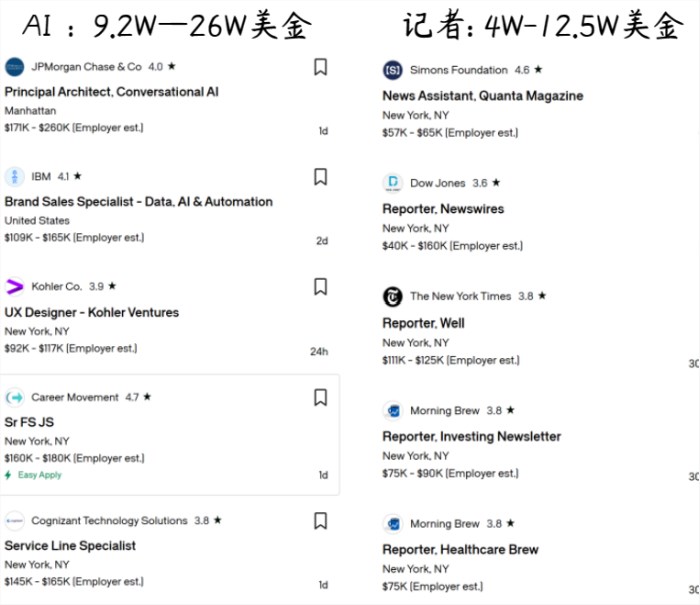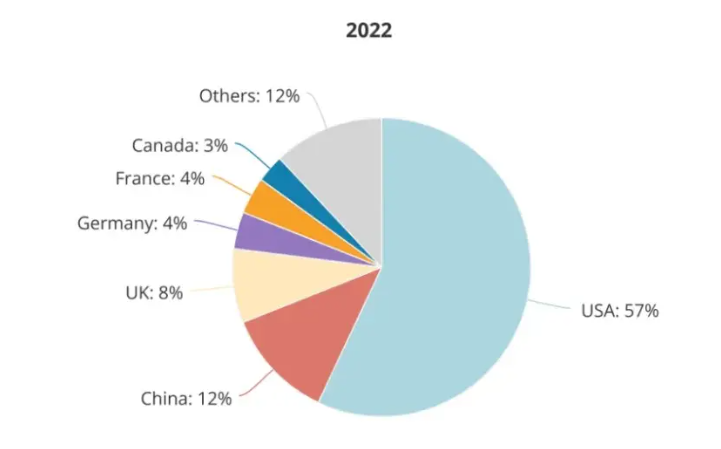AI talentThe battle is on, officially!
In today's technology-driven era, theAI(AI) has become a key force driving future innovation. With the rapid development of AI technology, a silent war is being fiercely staged in Silicon Valley - the war for AI talent. This war not only involvesTech giantsThe high-paying showdown between the two is more of a reflection of the strategic layout at the national level.
Musk has been outspoken about the fact that the battle for AI talent is the fiercest competition he's seen in his career. One of the protagonists in this war, OpenAI, is preparing to poach the entire AI R&D team from Tesla. In response to this challenge, Musk plans to raise the pay of AI R&D staff to retain them. This series of actions reveals the fact that talent is the most valuable resource in the AI field.
Tech giants throw in tantalizing offers
In this battle for talent, salary has become an important factor in attracting talent. According to the U.S. Department of Labor, the average annual salary of AI data scientists is 120,000 to 200,000 U.S. dollars, and the annual income of machine learning engineers is as high as 125,000 to 200,000 U.S. dollars, which is three to five times the average salary in the United States. The tech giants, in order to grab AI talent, offer annual salaries of millions or even tens of millions of dollars. For example, OpenAI offers AI software engineers an annual salary of up to $540,000 to $910,000, and Google'sTopAnnual salary of AI researchersHighestUp to $2.595 million.

In this battle, it's not just about money, but also about a range of benefits packages.OpenAI offers not just a high salary, but up to 29 weeks of paid parental leave and business insurance that covers the employee's family. Google, on the other hand, offers an additional system of benefits on top of base pay, dividends and distributions to attract and retaintop notchTalent.

Talent turnover isn't limited to intercompany. meta recently lost threeadvancedAI employees, including AIGCadvancedDirector Devi Parikh, computer scientist Erik Meijer, and Meta AI research scientist Abhishek Das.The movement of these talents has not only changed the competitive landscape of the company, but also influenced the direction of the entire AI industry.
There's also a lot of competition between countries.
According to a survey by the McRobert Pollock think tank, 70%'sTopAI talent working in organizations in China or the U.S., 65%'sTopAI talent comes out of China and the US. The U.S. with its 60% globalTopAI research organization to become the world's most elite (top 2%) AI talentFirst choiceEmployment destinations. However, China is closely followed by the United States as themaximumcompetitors, although only 121 TP3T of the most elite AI talent is currently availableFirst choiceEmployment in China.

The U.S. higher education system, especially the strength of graduate education, provides an attractive working environment and development opportunities for global AI talents. U.S. universities and research institutions, such as Stanford, MIT and UC Berkeley, as well as companies such as Google and OpenAI, not only cultivate a large number of AI talents, but also provide a broad career arena for global AI elites.39% of STEM PhDs graduating from the U.S. in 2019 are foreign-born, which reflects the U.S.'s STEM field of foreign talent's dependence and attraction.

China is a globalmaximumofTopAI talent exporter, also in terms of quantity and quality of talent U.S.maximumof competitors. Undergraduate education inTopAI talent accounted for 47% globally, while 18% received their undergraduate education in the U.S. However, a large number of Chinese AI talent flowed to the U.S. at the graduate level, with close to 40% choosing to go to the U.S. for further education and 77% of non-U.S. students choosing to stay in the U.S. to work.
While the U.S. currently holds the lead in AI, China is rapidly closing the gap.In 2022 China is producing a globalTopThe percentage of AI researchers rose to 47%, a significant increase from 29% in 2019. The most elite (top 2%) AI talent is now 26% from China and 28% from the US, which is very close. This trend shows that China is attracting more and more AI talent back to the country as it is placing more and more emphasis on AI talent cultivation and introduction.
Talent is becoming the focus of the AI wave
Salary levels and the intensity of the war for talent in the AI industry reflect the industry's rapid growth and investment in future technologies. This high value and investment in talent is not only critical to the growth of companies, but also has a profound impact on the progress and innovation of the tech industry as a whole.

Meanwhile, the battle for AI talent is not just a high-paying showdown between tech giants, it's part of a national strategy. In an industry driven by a handful of geniuses, the value of talent is being pushed to an unprecedented level. As AI technology continues to advance and applications expand widely, we can foresee that the heat of this battle is just beginning to heat up.
In the future, we will continue to witness how AI talents will shape the future of technology and how they will lead us into a new, smarter era. Meanwhile, the competition and cooperation between China and the United States in the field of AI will have a profound impact on the development of global AI technology. With the changing trend of global talent mobility, countries are also actively adjusting their strategies in order to take a favorable position in the future AI race.
References:
https://zhuanlan.zhihu.com/p/689301962
https://new.qq.com/rain/a/20240410A08PRN00